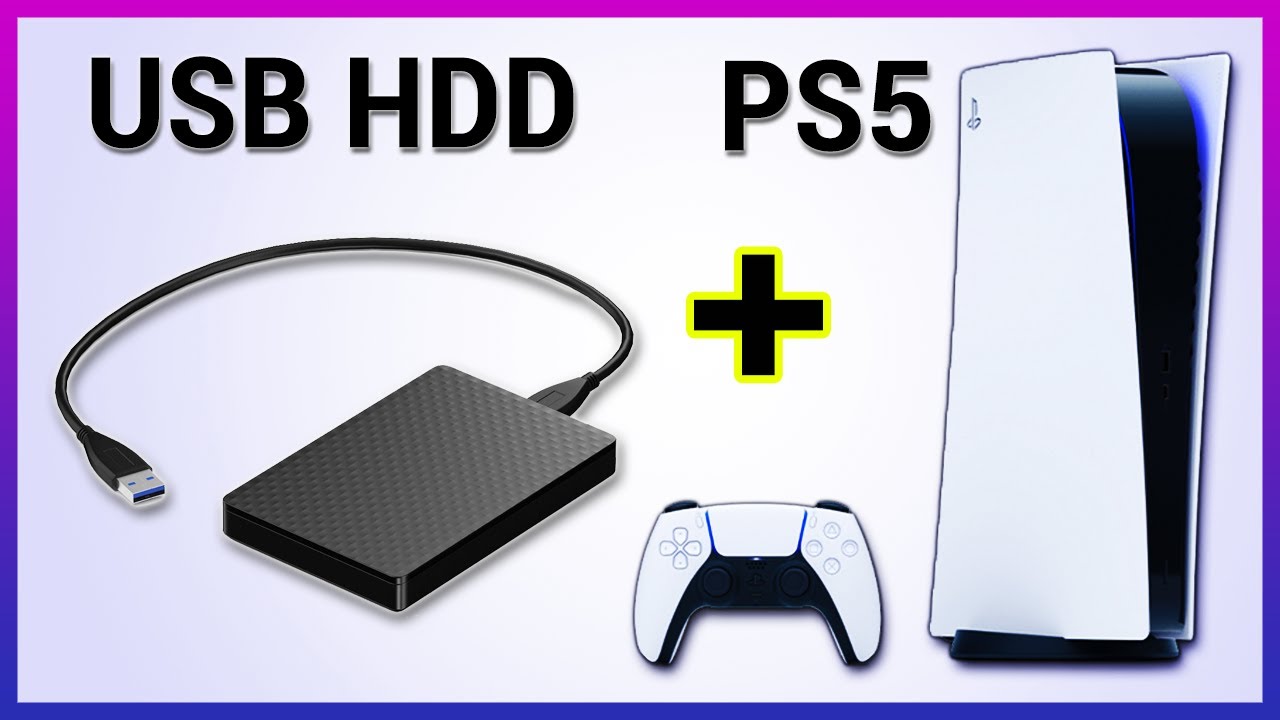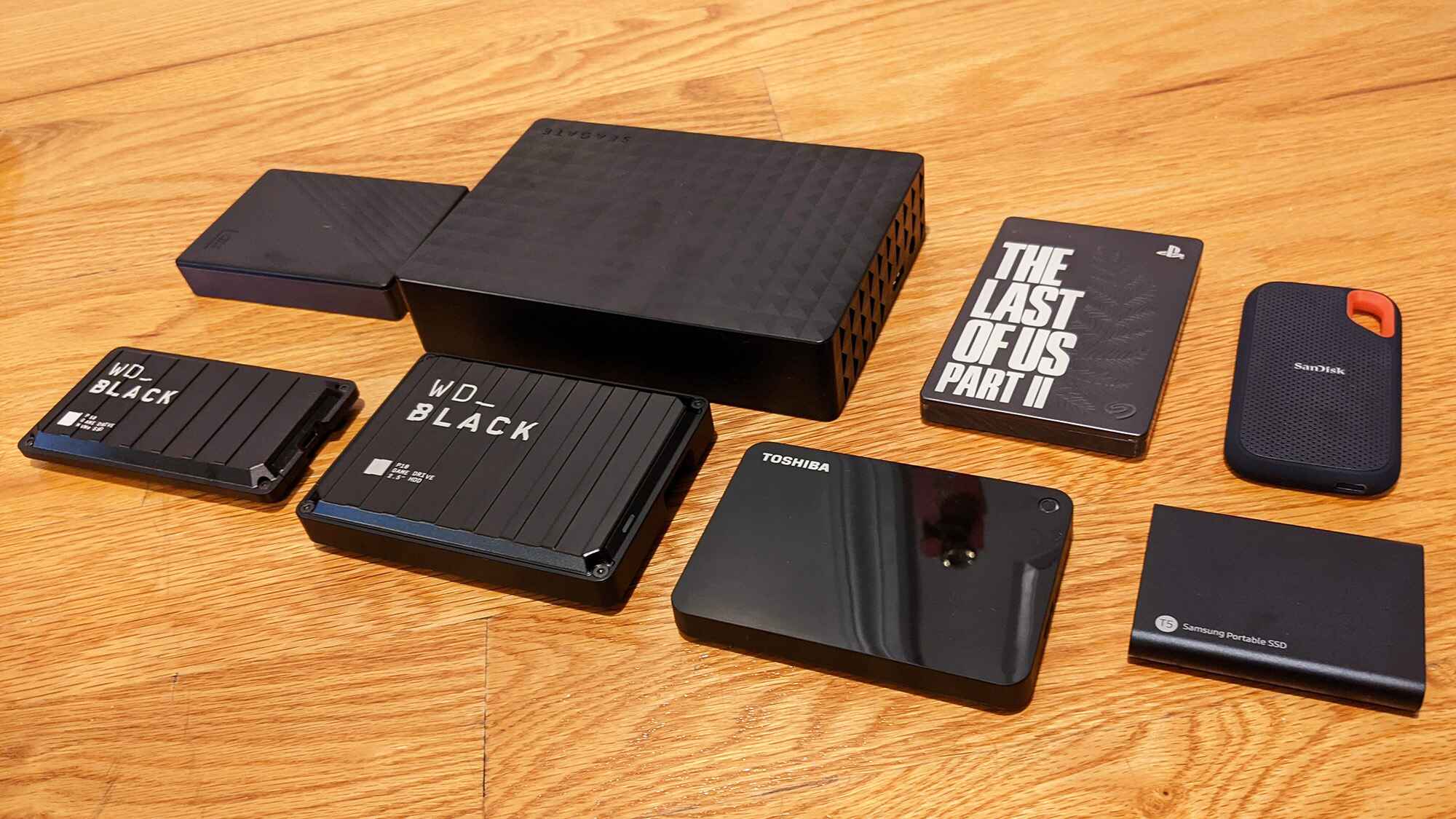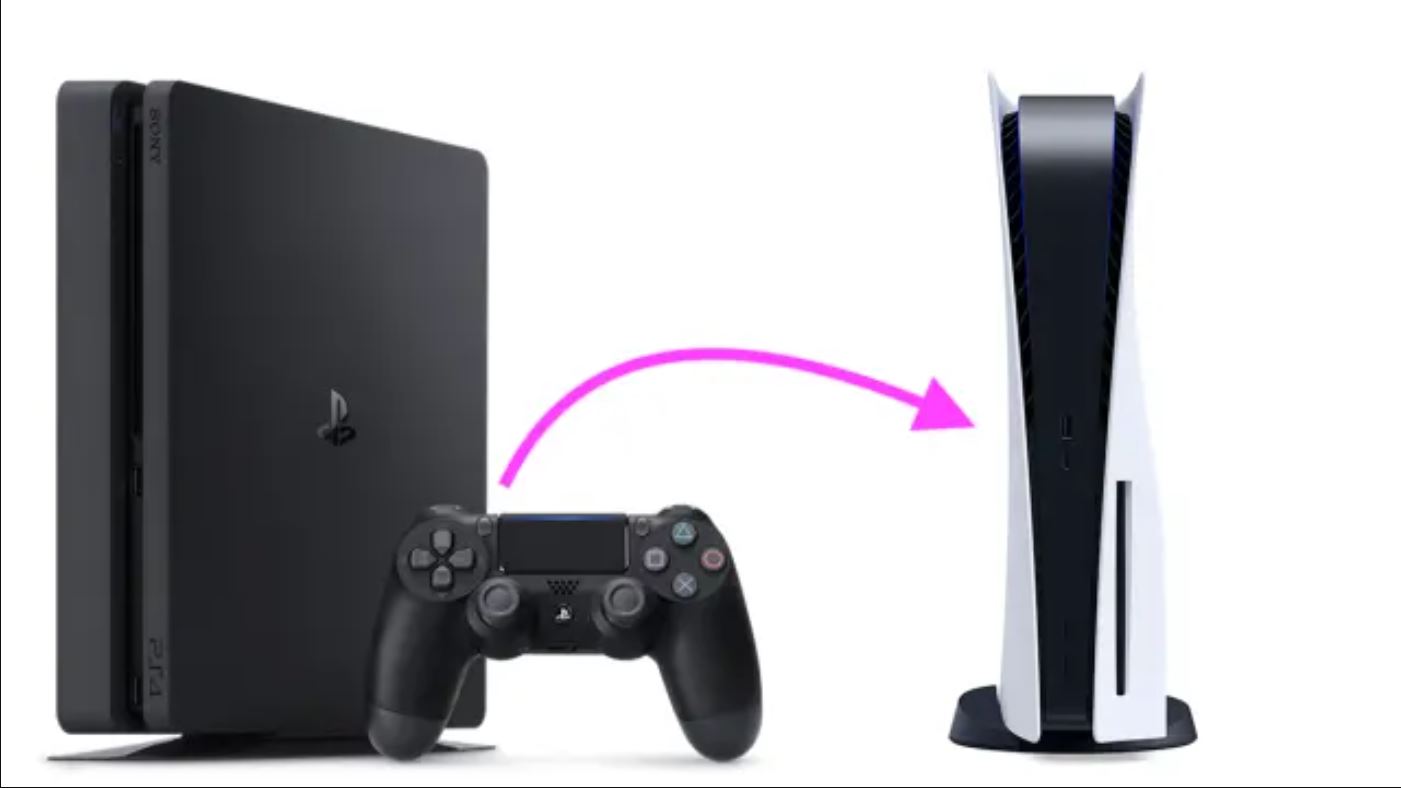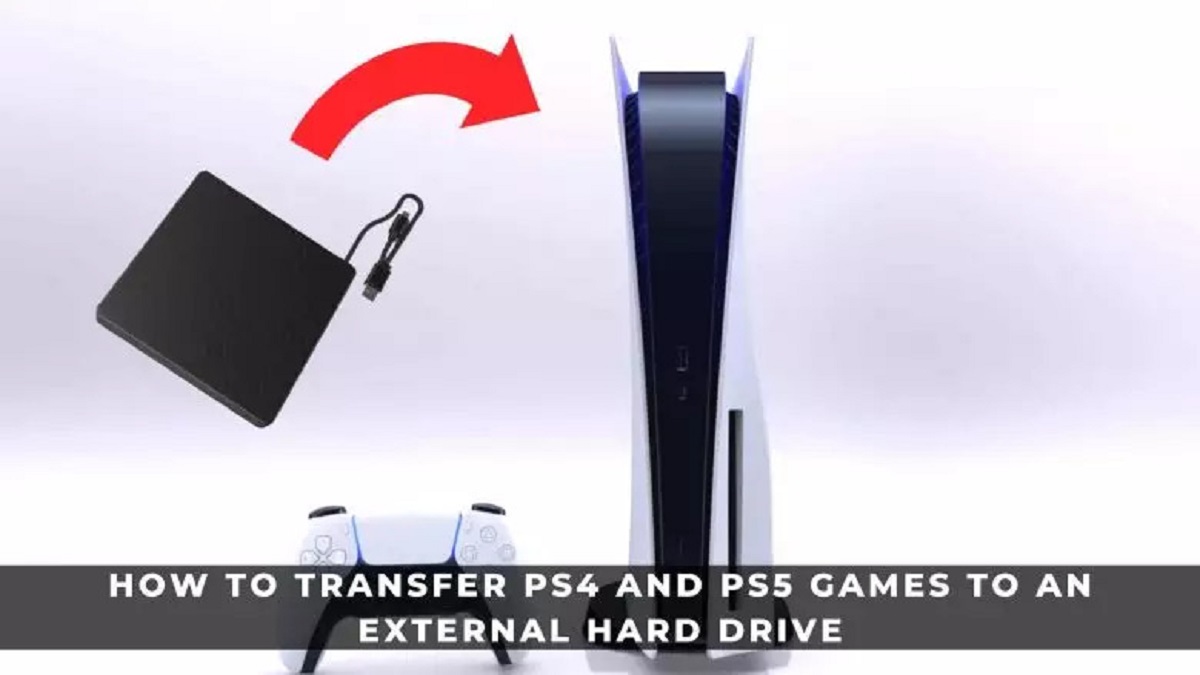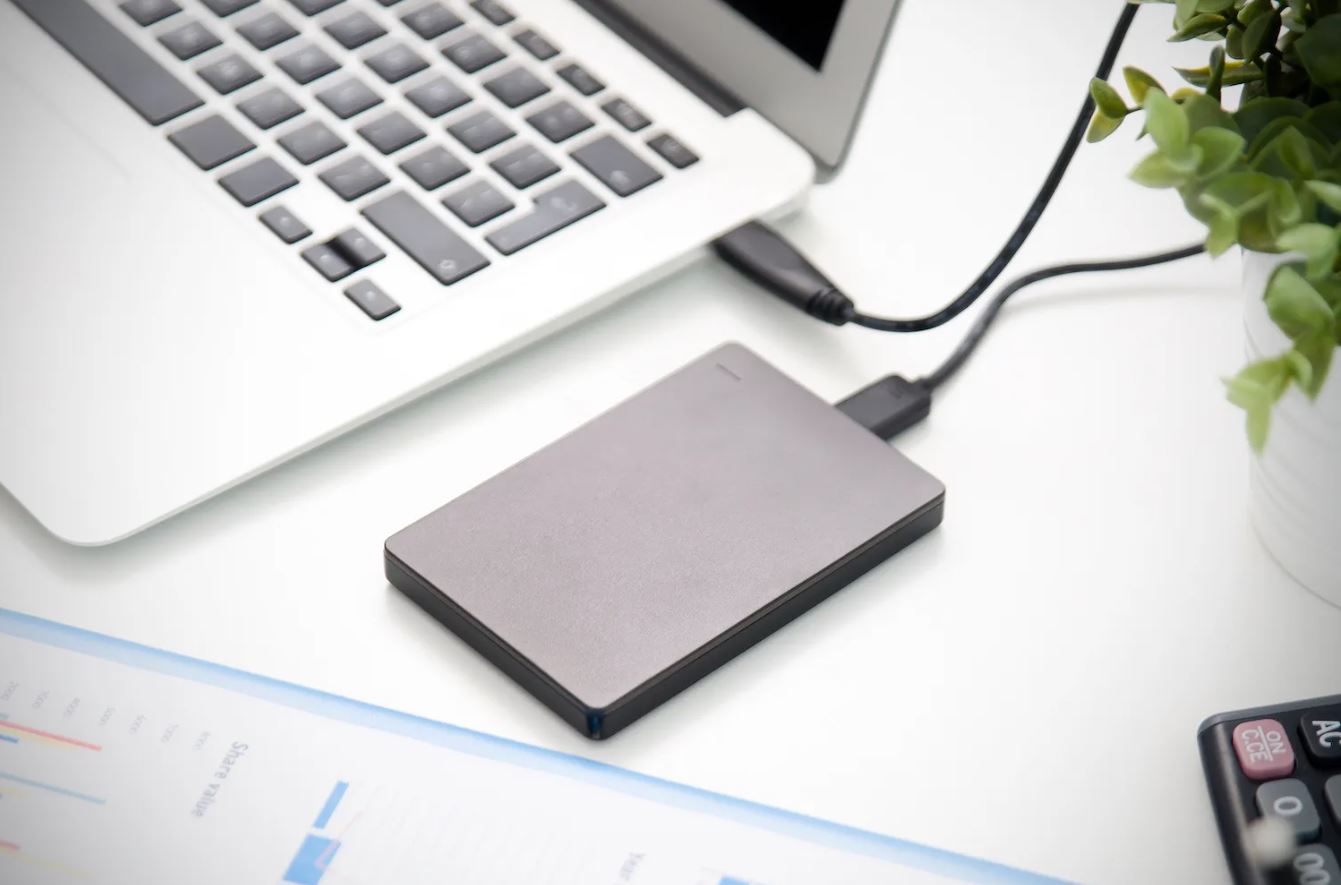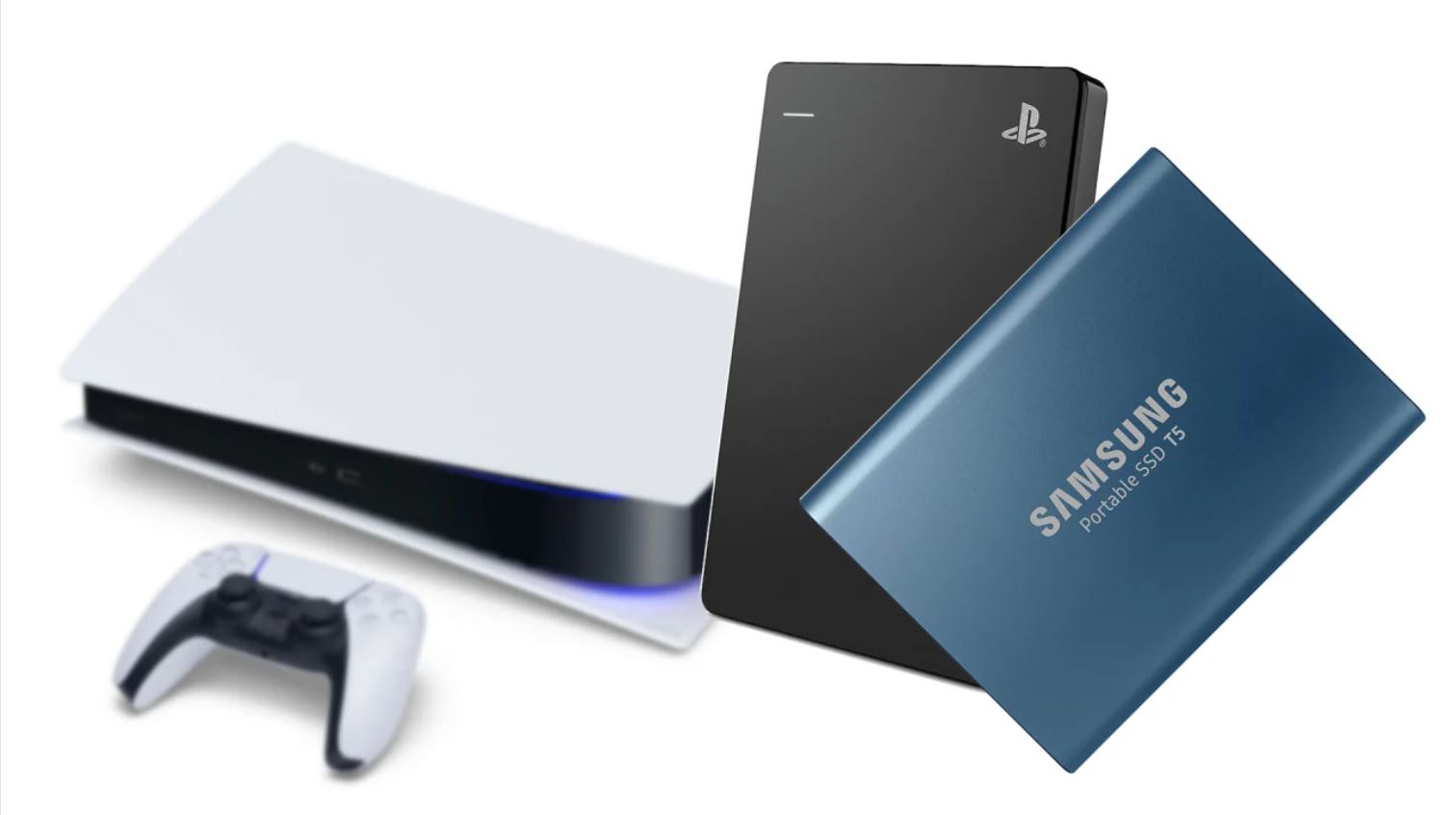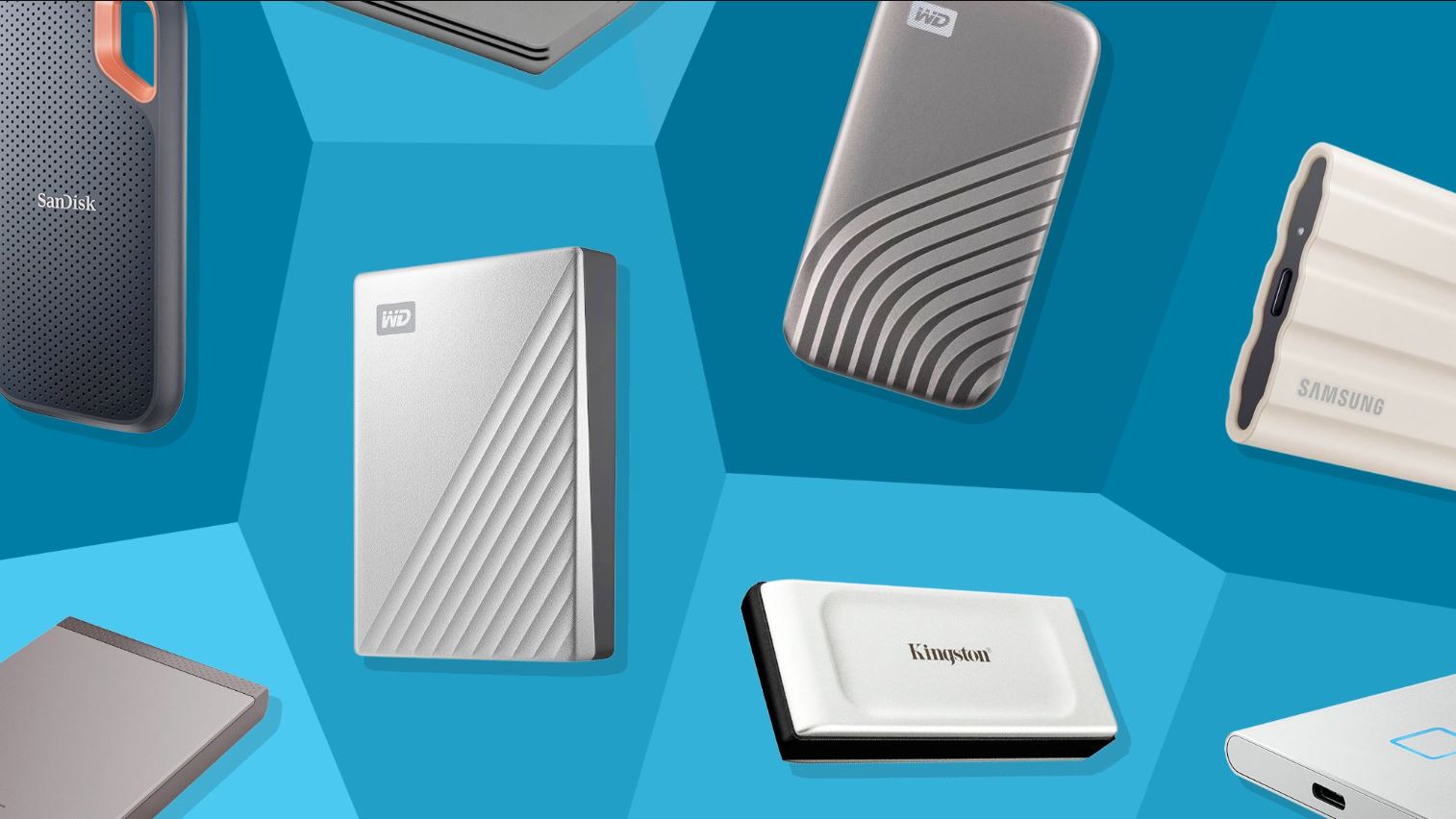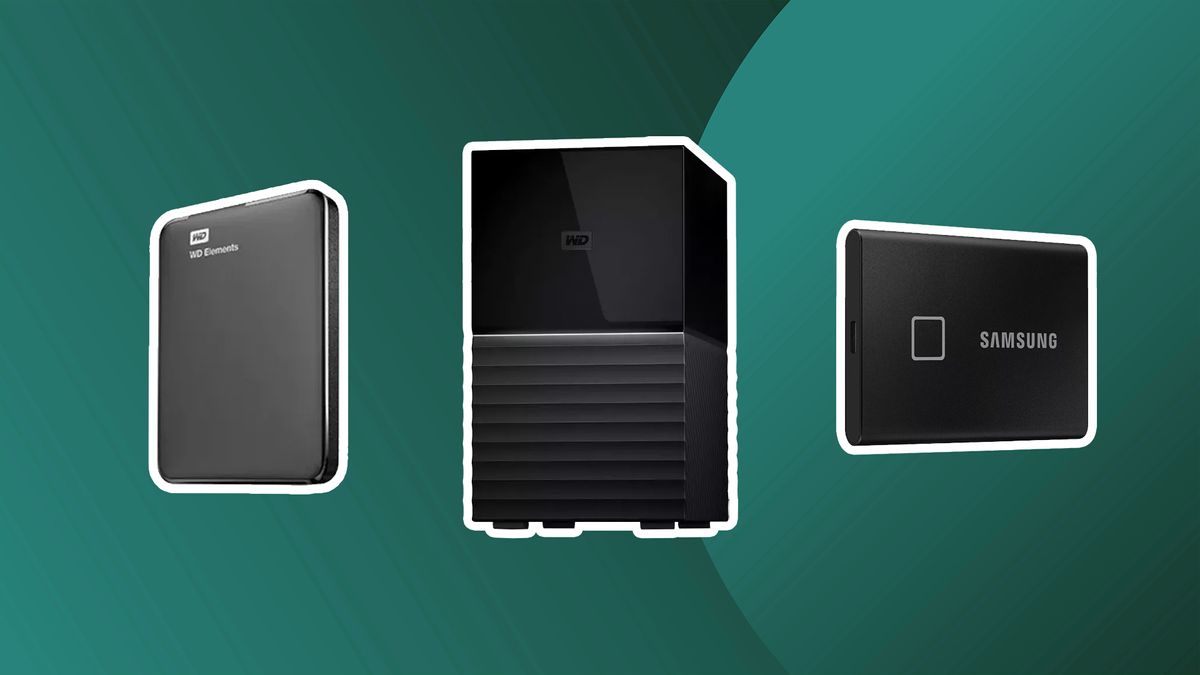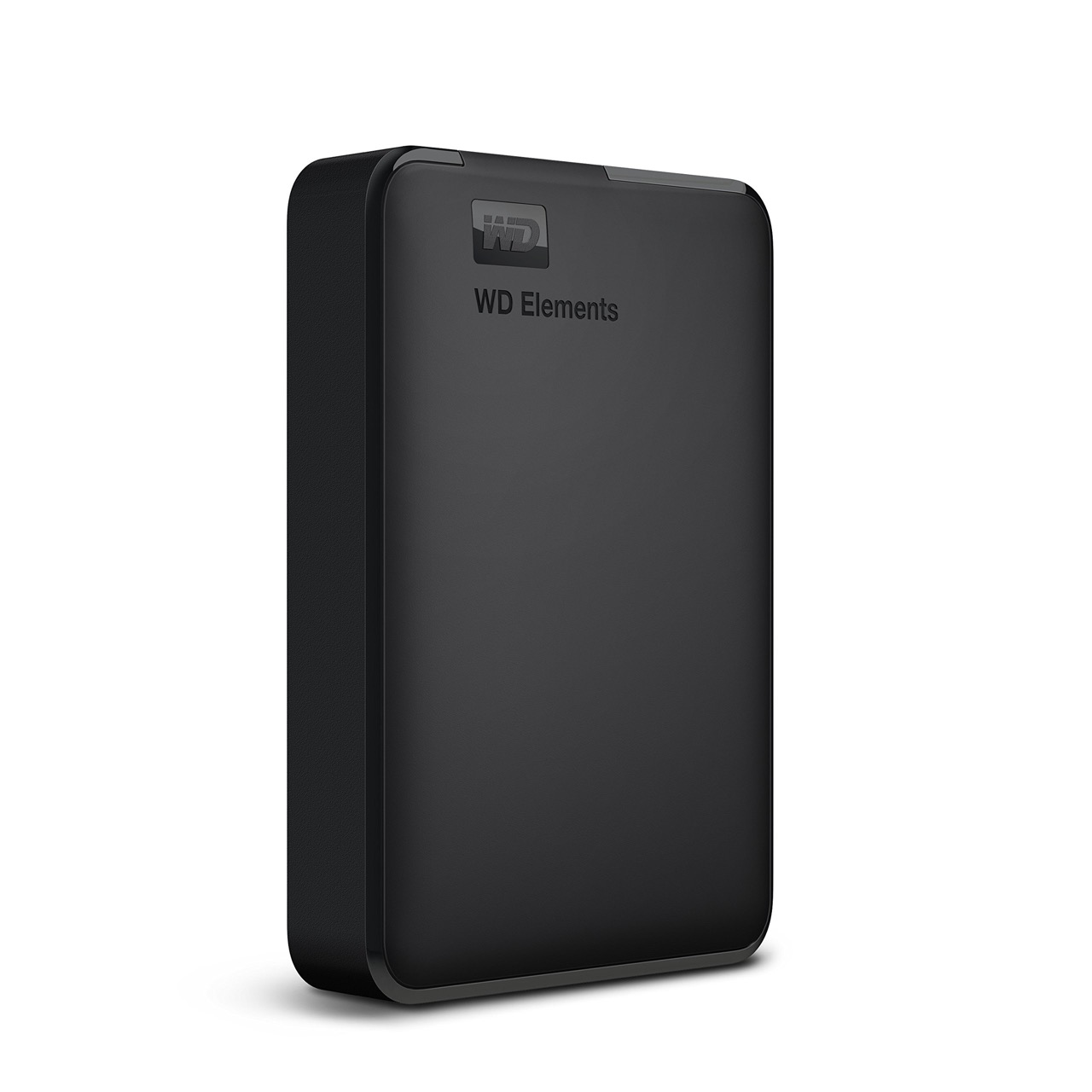Introduction
Welcome to the world of gaming on the PlayStation 5 (PS5)! With its powerful hardware and stunning graphics, the PS5 offers an immersive gaming experience like no other. As a proud PS5 owner, you may find yourself wanting to expand your storage capacity by connecting an external hard drive. Whether you’re looking to store more games, backup your data, or transport files, plugging in an external hard drive to your PS5 is a convenient solution.
In this guide, we will explore the different options for plugging in an external hard drive to your PS5. We will discuss the various USB ports available on the console, including their locations, compatibility, and speed considerations. We will also provide step-by-step instructions on connecting and configuring your external hard drive properly. Additionally, we will address some common troubleshooting issues that you may encounter along the way.
Before we delve into the details, it’s important to note that the PS5 supports USB-A and USB-C connections for external storage devices. The USB-A ports are the traditional rectangular ones, while the USB-C port is the smaller oval-shaped port. Both offer different advantages and capabilities, so it’s essential to understand which port is best suited for your specific needs.
So, if you’re ready to expand your storage options and optimize your gaming experience on the PS5, let’s dive into the world of external hard drive connectivity!
USB-A Ports on the Front of the PS5
One of the most convenient options for plugging in an external hard drive to your PS5 is through the USB-A ports located on the front of the console. These USB-A ports are easily accessible and provide a seamless way to connect your external storage device.
The PS5 is equipped with two USB-A ports on its front panel, making it convenient to connect multiple devices simultaneously. These ports are backward compatible, meaning you can use USB 2.0 or USB 3.0 external hard drives with the console. However, to unlock the full potential of your external storage device, it is recommended to use a USB 3.0 or higher compatible hard drive.
USB 3.0 offers faster data transfer speed compared to USB 2.0, resulting in quicker loading times and smoother gameplay when accessing games or other files stored on the external hard drive. Additionally, USB 3.0 provides enhanced power delivery, ensuring that your external hard drive receives sufficient power to operate efficiently.
When connecting an external hard drive to the USB-A ports on the front of the PS5, ensure that you use a USB-A to USB-A cable. This cable typically comes included with your external hard drive or can be purchased separately. It’s important to note that the USB-A ports on the front of the PS5 do not support charging devices or connecting other peripherals like controllers. These ports are specifically designed for data transfer purposes.
Once you have connected your external hard drive to the USB-A port on the front of the PS5, the console will automatically detect and recognize the device. You will then be prompted to format the external hard drive for PS5 use. Follow the on-screen instructions to complete the formatting process.
With the external hard drive successfully connected and formatted, you can now start utilizing the additional storage space for storing games, downloading updates, or backing up your data. The PS5 allows you to transfer games from the internal storage to the external hard drive or even play games directly from the external storage, providing flexibility and convenience.
Whether you have a vast game library or need extra storage for media files, the USB-A ports on the front of the PS5 offer a simple and accessible way to expand your storage capabilities. So, make the most out of these USB-A ports and enjoy hassle-free external hard drive connectivity with your PS5!
USB-A Ports on the Back of the PS5
In addition to the USB-A ports on the front of the PS5, there are also two USB-A ports located on the back of the console. These ports provide another option for connecting an external hard drive to your PS5.
The USB-A ports on the back of the PS5 offer the same compatibility and functionality as the ones on the front. They support both USB 2.0 and USB 3.0 devices, allowing you to connect various generations of external hard drives to the console.
One advantage of using the USB-A ports on the back of the PS5 is that they are tucked away from view, providing a clean and clutter-free appearance. This can be beneficial if you prefer a neater setup or if you have limited space near the front of your console.
When connecting an external hard drive to the USB-A ports on the back of the PS5, you will need to use a USB-A to USB-A cable, just like with the front ports. Ensure that the cable is securely connected to both the console and the external hard drive to establish a stable and reliable connection.
The process of formatting the external hard drive for use with the PS5 remains the same when using the USB-A ports on the back of the console. The PS5 will detect the device and prompt you to format it to the PS5 file system. Follow the on-screen instructions to complete the formatting process.
Once the external hard drive is successfully formatted, you can start using it to store games, backup data, or even play games directly from the external storage. The USB-A ports on the back of the PS5 offer a convenient option for expanding your storage capacity while maintaining a clean and organized gaming setup.
It’s worth noting that the USB-A ports on the back of the PS5 can also be used for connecting other peripherals, such as wired controllers or gaming headsets. This can be useful if you prefer to keep your controller connections separate from the front ports or if you have multiple accessories that need to be connected.
With the USB-A ports on the back of the PS5, you have additional flexibility and options for connecting an external hard drive or other peripherals to enhance your gaming experience. So, take advantage of these ports and enjoy the convenience and expandability they offer!
USB-C Port on the Front of the PS5
The PS5 also features a USB-C port on the front of the console, providing yet another option for connecting an external hard drive. The USB-C port offers several advantages over the traditional USB-A ports and is increasingly becoming the standard for connectivity.
The USB-C port on the front of the PS5 is not only compatible with USB 3.0 devices but also supports the latest USB 3.1 and USB 3.2 standards. This means that you can enjoy faster data transfer speeds, improved power delivery, and enhanced overall performance when using a USB-C external hard drive.
One of the key benefits of the USB-C port is its reversible design, which allows for easy and hassle-free connections. Unlike the USB-A ports, the USB-C port can be inserted in any orientation, eliminating the need to fumble around to find the correct alignment. Simply plug in the USB-C cable with ease and enjoy a secure connection.
To connect an external hard drive to the USB-C port on the front of the PS5, you will need a USB-C to USB-A cable or a USB-C to USB-C cable, depending on the ports available on your external hard drive. Make sure to use a cable that is compatible with both the PS5 and your external storage device.
When you connect the external hard drive to the USB-C port, the PS5 will detect the device and prompt you to format it for use with the console. Follow the on-screen instructions to complete the formatting process, and your external hard drive will be ready to store games, data backups, or any other files you need.
The USB-C port on the front of the PS5 not only offers faster data transfer speeds but also provides the advantage of charging compatible devices. If you have a USB-C device that requires charging, such as a smartphone or a tablet, you can connect it to the USB-C port on the PS5 and conveniently charge it while gaming.
With the USB-C port on the front of the PS5, you have a versatile and powerful option for connecting your external hard drive. Take advantage of the faster speeds, reversible design, and charging capabilities to enhance your storage capacity and streamline your gaming experience.
USB-C Port on the Back of the PS5
In addition to the USB-C port on the front of the PS5, there is also a USB-C port located on the back of the console. This provides another convenient option for connecting an external hard drive to your PS5.
The USB-C port on the back of the PS5 offers the same compatibility and functionality as the one on the front. It supports USB 3.0, USB 3.1, and USB 3.2 devices, allowing you to connect a wide range of USB-C external hard drives for expanded storage.
One advantage of using the USB-C port on the back of the PS5 is that it provides a cleaner and more streamlined appearance, as the cables are tucked away behind the console. This can be beneficial if you prefer a neater gaming setup or if you have limited space near the front of your console.
To connect an external hard drive to the USB-C port on the back of the PS5, you will need a USB-C to USB-A cable or a USB-C to USB-C cable, depending on the ports available on your external storage device. Ensure that you use a cable that is compatible with both the PS5 and your external hard drive for a secure and reliable connection.
When you connect the external hard drive to the USB-C port, the PS5 will detect the device and prompt you to format it for use with the console. Formatting the external hard drive ensures compatibility and optimizes it for storing games, data backups, and other files on your PS5.
As with the USB-C port on the front, the USB-C port on the back of the PS5 also supports charging compatible devices. This means that you can conveniently charge your USB-C devices, such as smartphones or tablets, by connecting them to the USB-C port on the back of the console while gaming.
The USB-C port on the back of the PS5 provides an additional option for connecting and expanding your storage capacity with an external hard drive. Take advantage of the streamlined appearance, compatibility with USB-C devices, and charging capabilities to optimize your gaming setup and enhance your storage options.
USB Hub for Additional Ports
If you find yourself in need of more USB ports for connecting multiple devices to your PS5, using a USB hub is a fantastic solution. A USB hub allows you to expand the number of available ports and provides flexibility in connecting additional peripherals, including external hard drives.
A USB hub acts as a “splitter” for USB connections, taking one USB port on your PS5 and converting it into several ports. You can connect the USB hub to any of the available USB ports on your PS5, whether it’s the USB-A ports on the front or back or the USB-C ports on the front or back.
When selecting a USB hub, ensure that it supports USB 3.0 or higher to guarantee optimal data transfer speeds. Although you can use a USB 2.0 hub, keep in mind that the transfer speeds will be limited to the capabilities of USB 2.0.
Setting up a USB hub is simple. Connect the USB hub to your PS5 by plugging it into one of the available USB ports. Once connected, all the additional ports on the USB hub can be used for various peripherals, including external hard drives.
It’s important to note that if you connect an external hard drive to a USB hub, the data transfer speeds may be slightly reduced compared to directly connecting it to the PS5’s dedicated USB ports. However, this reduction is usually negligible and does not significantly affect gaming or file access performance.
Using a USB hub not only expands your USB connectivity options but also allows you to organize and manage your peripherals more efficiently. You can connect multiple external hard drives, controllers, gaming headsets, and other USB devices without constantly swapping cables or limited by the number of available USB ports on the PS5.
Remember to choose a reliable and high-quality USB hub to ensure stability and performance. Look for hubs that come with their own power supply, as this can help ensure that all connected devices receive sufficient power for optimal performance.
With a USB hub, you can easily connect and manage multiple peripherals, including external hard drives, to your PS5. Enjoy the convenience and flexibility of expanded USB connectivity and make the most out of your gaming experience.
Compatibility and Speed Considerations
When selecting an external hard drive for use with your PS5, it’s crucial to consider compatibility and speed to ensure optimal performance. Here are some key factors to keep in mind:
1. Compatibility: Ensure that the external hard drive you choose is compatible with the PS5. The console supports USB-A and USB-C connections, so make sure the external hard drive has the corresponding port. Additionally, check for compatibility with USB standards, such as USB 3.0, USB 3.1, or USB 3.2, for faster data transfer speeds and better performance.
2. Capacity: Consider the capacity of the external hard drive based on your storage needs. Games on the PS5 can take up significant amounts of space, so opt for a larger capacity to accommodate your growing game library. It’s recommended to choose an external hard drive with at least 500 GB to 1 TB or more for maximum storage capacity.
3. Speed: USB 3.0, USB 3.1, and USB 3.2 offer faster data transfer speeds compared to USB 2.0. Selecting an external hard drive with USB 3.0 or higher ensures quicker loading times when accessing games or transferring files. This results in a smoother gaming experience and faster backup or restore processes.
4. Solid-State Drive (SSD) vs. Hard Disk Drive (HDD): Consider the type of storage technology the external hard drive uses. SSDs offer faster data transfer speeds and quicker loading times compared to traditional HDDs. While SSDs may be more expensive, they provide a noticeable performance boost for loading games and accessing files on your PS5.
5. External Power Supply: Depending on the capacity and power requirements of the external hard drive, it may require an external power supply. Some larger capacity HDDs may need additional power to operate effectively. Check the specifications of the external hard drive and ensure it can receive sufficient power from the PS5 or use an external power source if needed.
6. Brand and Reliability: Opt for reputable brands known for their reliability and performance. Research customer reviews and feedback to ensure you select an external hard drive that will provide a stable and long-lasting storage solution for your PS5.
By considering compatibility and speed factors, you can choose the most suitable external hard drive for your PS5. Take into account your storage requirements, the type of technology used, and the reliability of the brand. With the right external hard drive, you can expand your storage capacity and enjoy a seamless gaming experience on your PS5.
Ensuring Proper Power Supply for External Hard Drive
When connecting an external hard drive to your PS5, it’s essential to ensure that it receives proper power supply. Insufficient power can lead to performance issues or cause the external hard drive to malfunction. Here are some considerations to keep in mind:
1. USB Port Power: Understand the power output capabilities of the USB port you are using to connect the external hard drive. USB 3.0, USB 3.1, and USB 3.2 ports typically provide more power compared to USB 2.0 ports. Higher-powered USB ports are better suited for larger capacity external hard drives or those that require more power.
2. External Power Adapter: Some external hard drives, especially larger capacity HDDs, require external power for proper functioning. Check if your external hard drive comes with an external power adapter and use it if necessary. Make sure to connect the power adapter to an electrical outlet before connecting the USB cable to the PS5.
3. USB Hub Considerations: If you are using a USB hub to connect multiple devices, including an external hard drive, make sure the hub has its own power supply. This ensures that each connected device receives sufficient power, preventing any power-related issues. USB hubs with power adapters are recommended for stable power distribution.
4. Limitations of Power Draw: Keep in mind that the total power draw from all connected devices should not exceed the power output capabilities of the USB port or hub. Overloading the USB port can lead to power instability and potential malfunctions. If you experience issues with multiple devices connected, consider disconnecting some to alleviate the power load.
5. Check Manufacturer’s Recommendations: Refer to the manufacturer’s guidelines and recommendations for powering the external hard drive. They provide specific instructions on power requirements and any additional steps needed to ensure proper power supply. Following these guidelines ensures optimal performance and minimizes the risk of potential issues.
Ensuring proper power supply is crucial for the reliable functioning of your external hard drive. By understanding the power capabilities of the USB port, utilizing external power adapters when necessary, considering power draw limitations, and adhering to manufacturer’s recommendations, you can provide the necessary power for your external hard drive and enjoy uninterrupted storage capacity on your PS5.
Connecting and Configuring the External Hard Drive
Connecting and configuring an external hard drive to your PS5 is a straightforward process. Follow these steps to ensure a successful setup:
1. Select the Right Port: Choose the appropriate USB port on your PS5 based on the type of connection your external hard drive uses. If it requires a USB-A connection, use one of the USB-A ports, either on the front or back of the console. If it requires a USB-C connection, use the corresponding USB-C port.
2. Connect the External Hard Drive: Use the appropriate USB cable to connect the external hard drive to the selected USB port on your PS5. Ensure a secure connection by firmly plugging in the cable on both ends.
3. Power On the External Hard Drive: If the external hard drive requires external power, connect the power adapter to an electrical outlet and power it on before connecting the USB cable. The external hard drive should turn on and be ready for use.
4. Format the External Hard Drive: Once the external hard drive is connected, the PS5 will detect the device and prompt you to format it for PS5 use. Follow the on-screen instructions to initiate the formatting process. Be aware that formatting erases any existing data on the external hard drive, so ensure you have backed up any important files before proceeding.
5. Wait for Formatting to Complete: The formatting process may take a few minutes, depending on the size and speed of your external hard drive. Be patient and let the PS5 complete the formatting. Do not disconnect the external hard drive or turn off the console during this process.
6. Set Default Install Location: After the formatting is complete, you may be prompted to set the default install location. Choose whether you want to install games and apps to the external hard drive by default or keep it as the internal storage for future downloads.
7. Enjoy Additional Storage: Once the external hard drive is connected and configured, you can start using it to store games, apps, and other files. You can transfer existing games from the internal storage to the external hard drive or specify the external drive as the default location for future installations.
Remember to safely eject the external hard drive from the PS5 before physically disconnecting it. This helps prevent data corruption and ensures that all files are properly saved.
By following these steps, you can effectively connect and configure an external hard drive to your PS5. Enjoy the added storage capacity and flexibility that the external drive provides, giving you more room to store your favorite games and content.
Troubleshooting Common Issues
While connecting and using an external hard drive with your PS5 is generally a smooth process, you may encounter some common issues. Here are troubleshooting steps for addressing these issues:
1. External Hard Drive Not Recognized: If the PS5 does not detect the external hard drive, ensure that it is properly connected to the correct USB port. Try disconnecting and reconnecting the USB cable to establish a secure connection. If the issue persists, check if the external hard drive is compatible with the PS5 and if it requires any specific drivers or updates.
2. Slow Transfer Speeds: If you experience slow data transfer speeds, ensure that you are using a USB 3.0 or higher compatible external hard drive. Check that the USB port you are using supports the corresponding USB standard. Using a USB hub or connecting multiple devices may also impact transfer speeds, so try connecting the external hard drive directly to the PS5’s dedicated USB port.
3. Power Supply Issues: If the external hard drive is not receiving sufficient power, double-check the power supply connections. If it requires an external power adapter, ensure it is properly connected and powered on. Consider using a powered USB hub to distribute power more effectively among multiple devices.
4. Consistent Disconnections: If the external hard drive keeps disconnecting from the PS5, try using a different USB cable to rule out any cable issues. Make sure the cable is securely connected on both ends. If the problem persists, it may indicate a faulty USB port on the PS5 or a problem with the external hard drive itself.
5. Formatting Error: If you encounter an error while formatting the external hard drive, ensure that it meets the PS5’s requirements for format and storage capacity. Try connecting the external hard drive to a computer and formatting it in FAT32 or exFAT file system format. Once formatted on the computer, reconnect it to the PS5 for a new format attempt.
6. Game Compatibility: Not all games can be stored or played from an external hard drive. Some games may require internal storage or an SSD for optimal performance. Consult the game’s documentation or check with the game developer for any specific requirements or limitations.
If you continue to experience issues, consult the PS5’s official support resources, such as their website or customer support, for further assistance. They can provide specific troubleshooting steps or guidance tailored to your situation.
By addressing common issues and following troubleshooting steps, you can overcome any obstacles when using an external hard drive with your PS5. Enjoy the convenience and expanded storage capacity that the external drive brings to enhance your gaming experience.
Conclusion
Expanding the storage capacity of your PS5 with an external hard drive provides a convenient and practical solution for gamers. Whether you’re looking to store more games, back up your data, or have a portable storage option, connecting an external hard drive to your PS5 is a straightforward process.
In this guide, we explored the different options for connecting an external hard drive to your PS5. We discussed the USB-A and USB-C ports, both on the front and back of the console, as well as the use of a USB hub to expand the number of available ports. We also highlighted the importance of considering compatibility, speed, and power supply to ensure optimal performance.
By following the steps outlined, you can effectively connect and configure an external hard drive, expanding your storage capacity and enhancing your gaming experience. From formatting the device to setting default install locations, you can seamlessly use the external hard drive to store games, apps, and other files.
Even with proper setup, you may encounter common issues such as connection problems, slow transfer speeds, or formatting errors. By troubleshooting these issues, you can overcome them and enjoy uninterrupted use of your external hard drive with the PS5.
Remember to choose a compatible external hard drive that meets your storage requirements. Pay attention to the speed capabilities, whether it’s USB 3.0, USB 3.1, or USB 3.2, to maximize data transfer rates. Ensure proper power supply, whether through the USB ports or external power adapters, to prevent performance issues.
With the ability to easily expand your storage capacity, you can store more games, media files, and data backups on your PS5. Enjoy the convenience and flexibility provided by the external hard drive, allowing you to have a seamless gaming experience with ample storage space.
So, go ahead and connect that external hard drive to your PS5, unlock the potential for more games, faster load times, and increased storage capacity. Let your gaming journey continue, uninterrupted by storage limitations!







